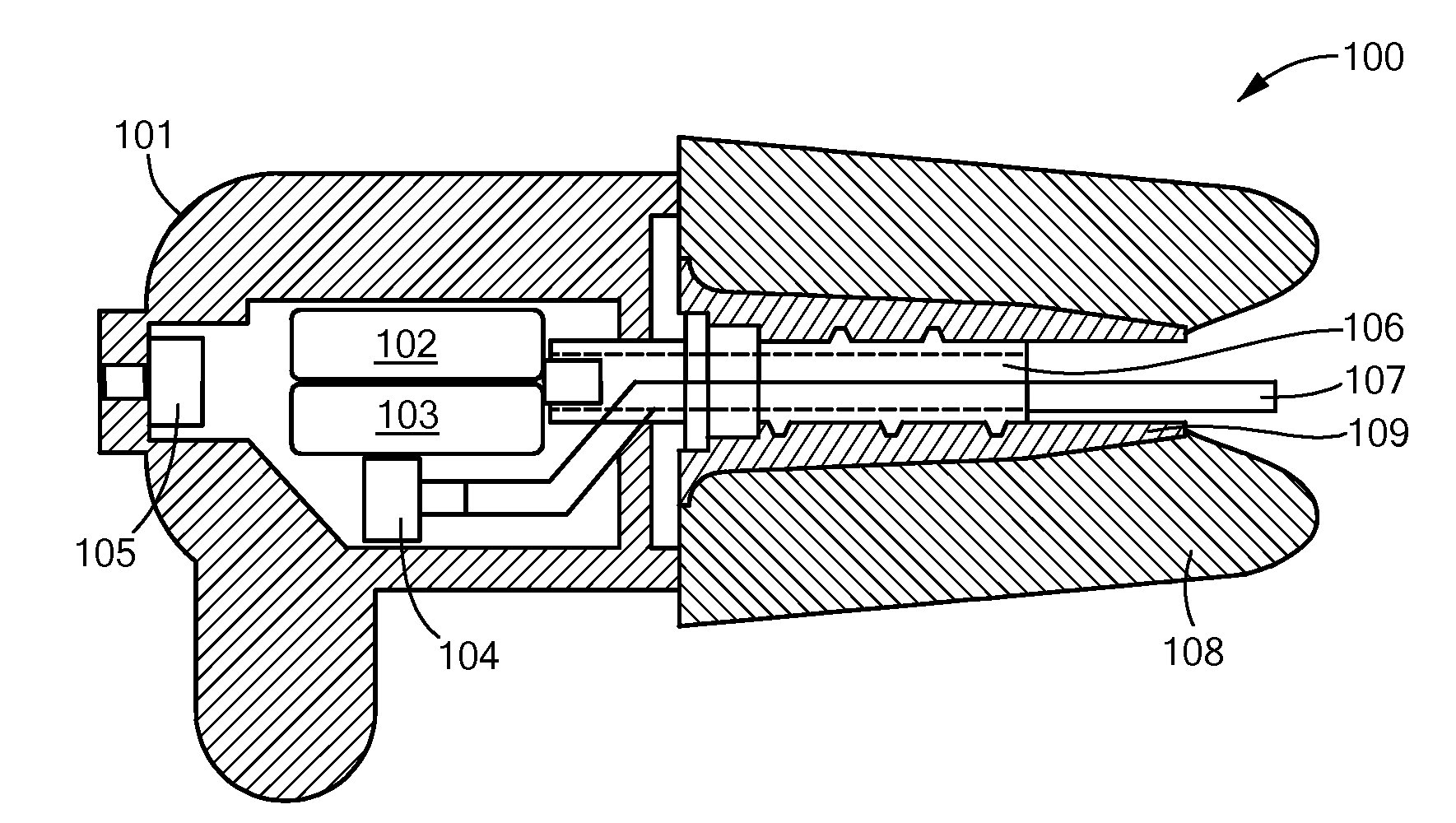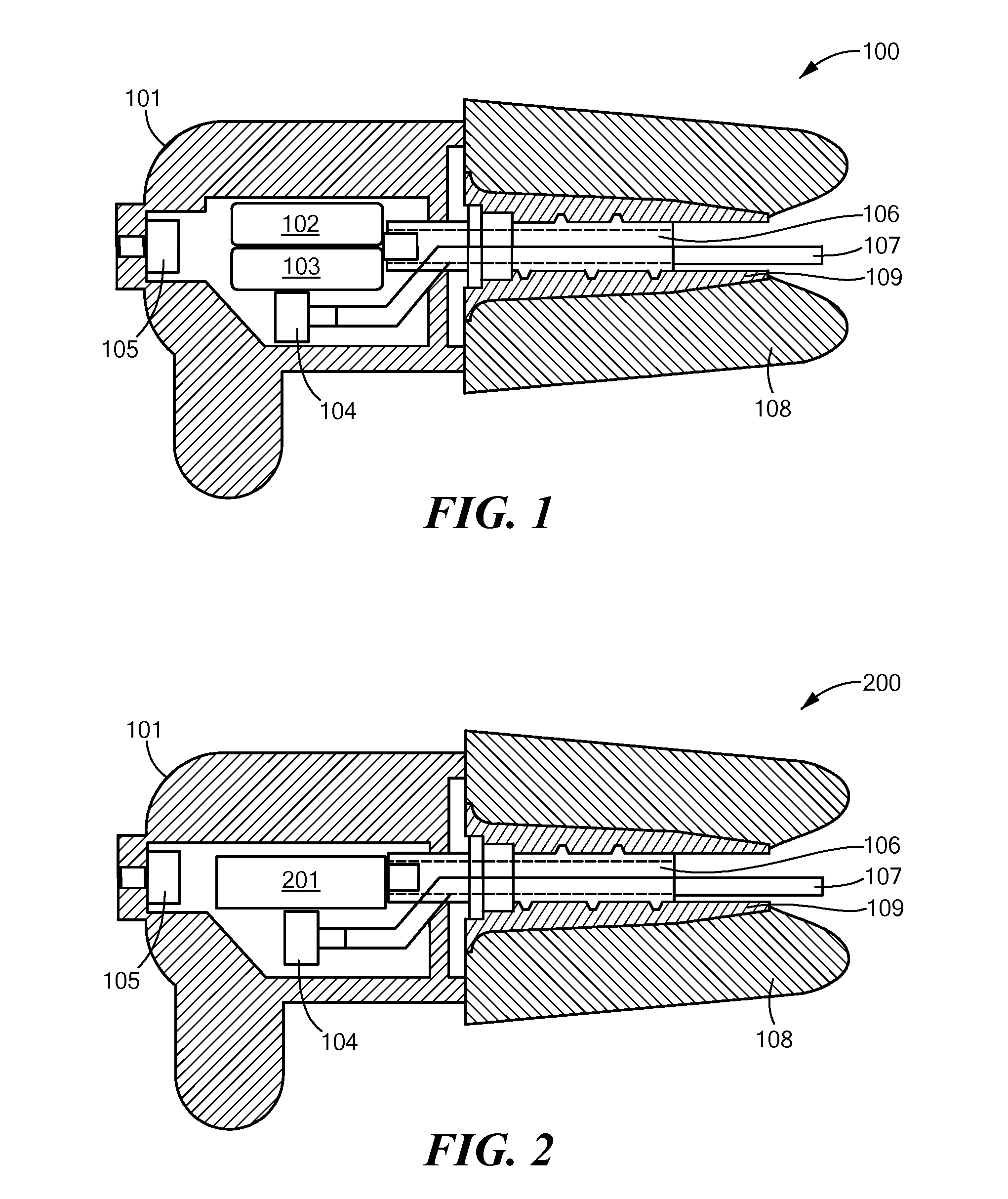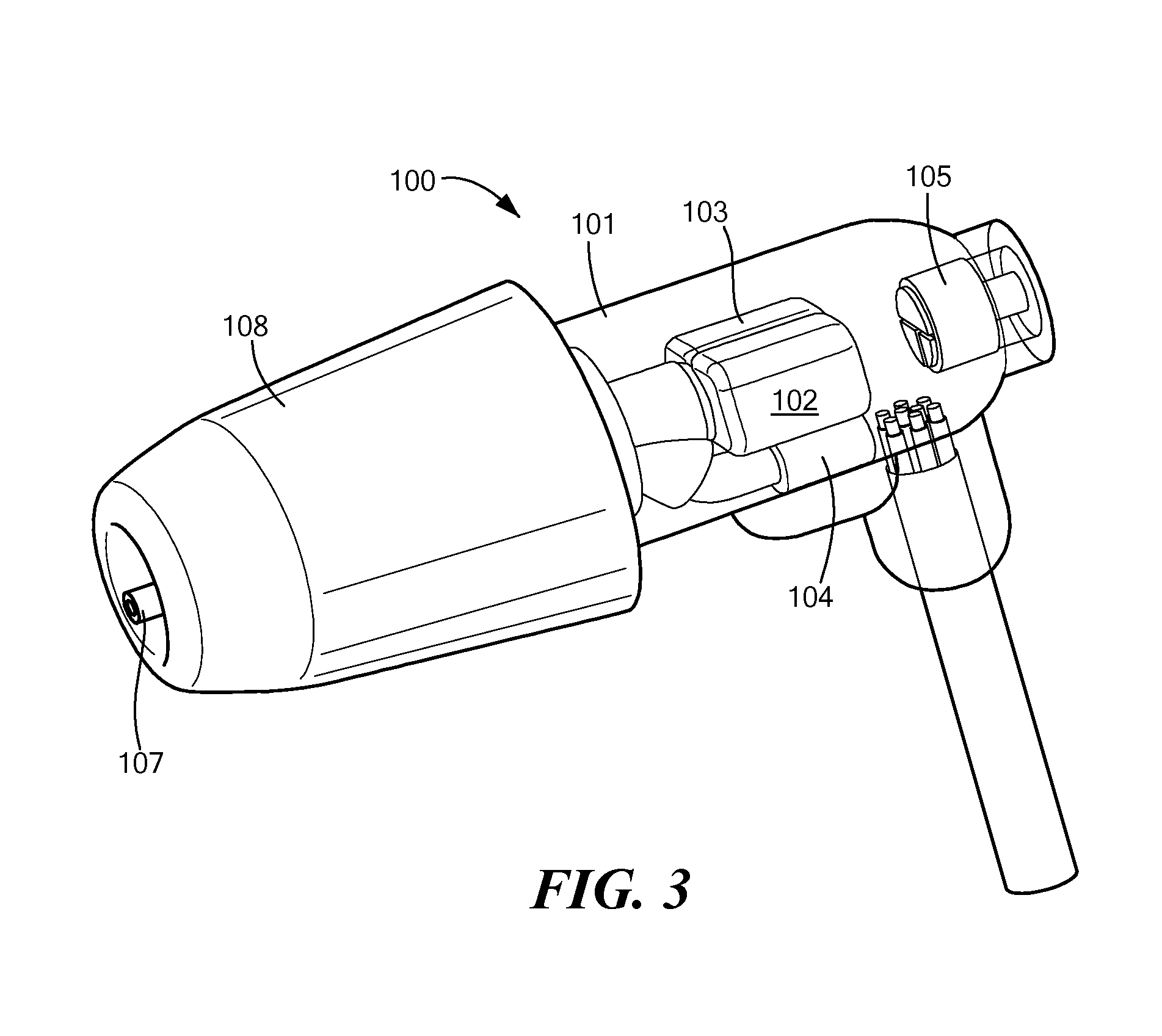In-Ear Digital Electronic Noise Cancelling and Communication Device
a communication device and digital electronic technology, applied in the field of in-ear digital electronic noise cancellation and communication devices, can solve problems such as noise-induced hearing loss, communication difficulties, and compromise the ability to communicate effectively or hear warning signals and cues, and achieve the effect of reducing external noise entering the ear canal
- Summary
- Abstract
- Description
- Claims
- Application Information
AI Technical Summary
Benefits of technology
Problems solved by technology
Method used
Image
Examples
Embodiment Construction
[0042]Embodiments of the present invention are directed to a noise canceling and communication system having two major components: (1) an in-ear device that fits into the ear canal of a device user, and (2) an electronics module located outside the ear canal and in communication with the in-ear device. The electronics module processes multiple microphone signals using a hybrid feed forward and feedback active noise reduction algorithm to produce a noise cancellation signal that automatically adjusts to the fit and geometry of the ear canal. The electronics module includes analog circuitry for signal conditioning, data conversion, power management, and a programmable digital processor for additional signal processing and application of the noise reduction algorithm. The electronics module may pass a communication signal to the in ear device.
[0043]FIG. 1 shows a cross-sectional view of an embodiment of a noise canceling in-ear device 100 having a molded plastic body 101 which includes...
PUM
 Login to View More
Login to View More Abstract
Description
Claims
Application Information
 Login to View More
Login to View More - R&D
- Intellectual Property
- Life Sciences
- Materials
- Tech Scout
- Unparalleled Data Quality
- Higher Quality Content
- 60% Fewer Hallucinations
Browse by: Latest US Patents, China's latest patents, Technical Efficacy Thesaurus, Application Domain, Technology Topic, Popular Technical Reports.
© 2025 PatSnap. All rights reserved.Legal|Privacy policy|Modern Slavery Act Transparency Statement|Sitemap|About US| Contact US: help@patsnap.com



